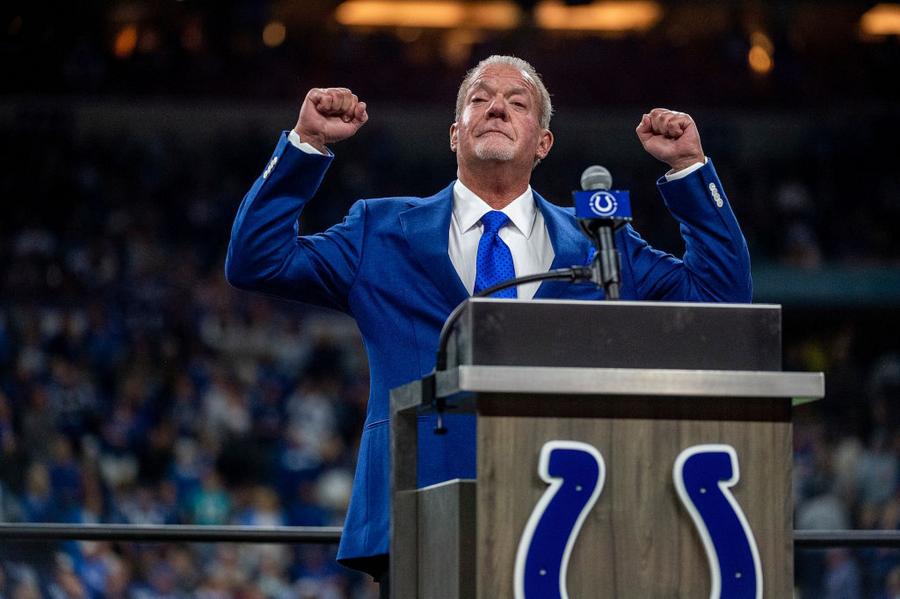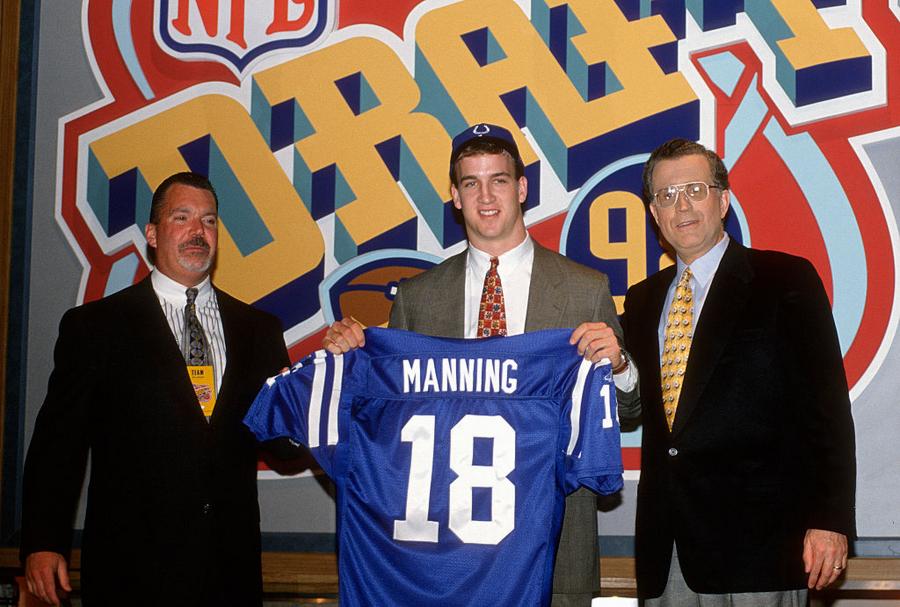Jim Irsay was never just another NFL owner. He was the guy in a rhinestone jacket quoting George Harrison and Hunter S. Thompson in the same sentence. The one who could just as easily drop $6 million on Muhammad Ali's championship belt as he could surprise a local animal shelter with a life-saving check. His passions were chaotic, unfiltered, and often misunderstood. His struggles were deeply public. But his loyalty to his team, his city, and his demons never wavered.
When Irsay died in his sleep on May 21, 2025, at age 65, Indianapolis didn't just lose a team owner. It lost a patron, a storyteller, a survivor. He had spent most of his life in the orbit of the NFL, eventually building the Colts into one of the league's most respected franchises. Off the field, Jim used his multi-billion-dollar net worth chasing beauty through guitars, manuscripts, addiction recovery, and raw human connection.
But to understand Jim Irsay, you have to go back to a different kind of story. A late-night moving truck. A fractured family empire. And a decision that changed NFL history forever.

(Photo by Bobby Ellis/Getty Images)
HVAC Fortune
The Irsay family fortune was built on air conditioning—specifically, through a company called Heat Transfer Company, founded by Jim's father, Robert Irsay, in the Chicago suburbs after World War II. The business specialized in HVAC systems and grew rapidly during the postwar construction boom, when suburban housing, office buildings, and industrial facilities across the Midwest all needed modern heating and cooling infrastructure. At its peak, Heat Transfer Company reportedly brought in tens of millions in annual revenue, making Robert a multimillionaire by his 40s.
Buying An NFL Team
In 1972, flush with cash and eager to enter the world of sports, Robert Irsay bought an NFL team. But not the one you're thinking of. He actually bought the Los Angeles Rams from the estate of Dan Reeves for $19 million, roughly $140 million today when adjusted for inflation. But in an unusual backroom deal, he immediately traded the Rams to Baltimore Colts owner Carroll Rosenbloom in exchange for the Colts. Why the trade? Because Carroll wanted to move to the West Coast. Jim Irsay was just 12 years old when this all went down.
FYI: After Carroll Rosenbloom acquired the Rams in a 1972 team swap with Robert Irsay, he ran the franchise until his sudden death by drowning in 1979. Control of the team passed to his widow, Georgia Frontiere, who became one of the NFL's few female owners. In 1995, amid dwindling support in Los Angeles, Frontiere controversially relocated the Rams to St. Louis. She remained owner until her death in 2008, at which point her children, Chip Rosenbloom and Lucia Rodriguez, inherited the team. Lacking long-term interest in running the franchise, they sold their 60% controlling stake in 2010 to Stan Kroenke for $750 million (he already owned a 40% minority share). In 2016 Stan moved the Rams back to Los Angeles, twenty-one years after their departure. He later funded the construction of SoFi Stadium, a $5 billion state-of-the-art venue in Inglewood, California. In less than a decade, the Rams had gone from family-owned in St. Louis to a Kroenke-controlled powerhouse in L.A., with one of the most valuable stadiums and franchises in all of sports.
Midnight Moves
Getting back to the Colts, who at this point in our story, 1972, were still located in Baltimore.
Robert Irsay's tenure as owner was tumultuous. Throughout the 1970s and early 1980s, his relationship with Baltimore city officials steadily deteriorated. The team was struggling, attendance was down, and Memorial Stadium, shared with the Orioles, was outdated and crumbling. For years, Irsay demanded renovations or a new stadium, but talks dragged on without progress.
Behind the scenes, he began entertaining relocation offers from cities like Phoenix, Jacksonville, and Indianapolis. In late 1983 and early 1984, word leaked that Irsay had made multiple visits to Indianapolis and was in serious discussions about a move. The city of Indianapolis had just completed construction on the brand-new Hoosier Dome and was eager to land an NFL team.
In response to these growing rumors—and fearing that Irsay would move the team without warning—the Maryland House of Delegates rushed to pass legislation in March 1984 that would allow the city or state to seize the Colts through eminent domain and keep the franchise in Baltimore.
The bill passed, but it backfired.
Rather than wait for a legal fight, Irsay made his move that very night. On March 29, 1984, under the cover of darkness, he hired 15 Mayflower moving trucks and began quietly moving the team's equipment and operations out of Baltimore. The trucks, dispatched from different locations to avoid suspicion, rolled west through the snow and arrived in Indianapolis before dawn.
Jim Takes the Helm
Jim Irsay joined the Colts full-time in 1982 after graduating from Southern Methodist University with a degree in broadcast journalism. By 1984, he was the NFL's youngest general manager at just 24 years old. He spent the next decade learning every aspect of the business, working under his father's erratic leadership while gradually building credibility in league circles.
When Robert suffered a stroke in 1995, control of the team became the subject of a heated legal dispute. Jim's stepmother, Nancy Irsay, claimed ownership, and the courts appointed a bank to temporarily oversee the franchise. Jim sued for control… and won. In 1997, at age 37, he became the youngest sole owner in the NFL.

Jim Irsay, Peyton Manning, and Paul Tagliabue (Photo by Focus on Sport/Getty Images)
Building a Winner
Jim wasted no time reshaping the Colts. He traded for general manager Bill Polian and used the first pick in the 1998 draft to select Peyton Manning. Over the next decade, the Colts became a powerhouse. Under Irsay's ownership, the team made 18 playoff appearances, won 10 division titles, and captured Super Bowl XLI in 2007.
He also helped modernize the team's infrastructure, leading the charge to build Lucas Oil Stadium, which opened in 2008. On the business side, he played a key role in salary cap development and served on several influential NFL committees.
The Collector
Outside football, Jim Irsay developed one of the most valuable private collections of cultural memorabilia in the world. He once turned down a $1.15 billion offer for the entire collection, calling it "priceless." He toured the items across the country in free public exhibits, often accompanied by live concerts from his all-star Jim Irsay Band.
Highlights from the Jim Irsay Collection include:
- Muhammad Ali's 1974 "Rumble in the Jungle" Championship Belt – $6.18 million
- Kurt Cobain's guitar from the "Smells Like Teen Spirit" music video – $4.6 million
- David Gilmour's "Black Strat" guitar – $3.975 million
- Jack Kerouac's original On the Road manuscript – $2.43 million
- The original Alcoholics Anonymous Big Book with handwritten notes – $2.4 million
- Ringo Starr's bass drum from The Ed Sullivan Show – $2 million
- Secretariat's Belmont Stakes saddle – $2 million
- Bob Dylan's 1965 Newport Folk Festival guitar – $965,000
- Elton John's touring piano – $915,000
Struggles and Redemption
Irsay's life was also marked by pain and personal struggle. He battled addiction for decades and was arrested in 2014 for DUI and drug possession. In 2023, he was hospitalized following a suspected overdose. He later revealed he had been to rehab "at least 15 times."
But he never ran from it. He used his platform to launch the Kicking the Stigma initiative, a campaign focused on mental health awareness and treatment access. He spoke candidly about the deaths of artists he admired—Elvis, Cobain, Belushi, Chris Farley—and how close he had come to joining them.
"I've never seen a hearse pulling a U-Haul," he once said. "It's dust to dust. We're all equals. Every single one of us matters."
Legacy
Jim Irsay is survived by three daughters—Carlie Irsay-Gordon, Casey Foyt, and Kalen Jackson—who have been active in Colts leadership for years. Carlie is expected to take over day-to-day control of the franchise.
Behind the headlines, Irsay was an unusually private giver. He made countless anonymous donations to local schools, restaurants, and animal shelters. During the COVID-19 shutdown in 2020, he issued a public challenge: if Indianapolis could raise $200,000 to feed students missing meals, he'd contribute $1 million. The city hit the goal. Irsay kept his promise.
He didn't move the Colts to Indianapolis. But he gave the city everything he could. A championship team. A rock-and-roll roadshow. And a legacy built not just on wealth or wins, but on redemption, vulnerability, and love.
/2015/09/jim.jpg)
/2025/08/irsay-lake.png)
/2023/07/GettyImages-1358263177.jpg)
/2014/10/khan.jpg)
/2018/05/GettyImages-908543406.jpg)
/2016/01/dome.jpg)
/2018/03/GettyImages-821622848.jpg)
/2009/11/George-Clooney.jpg)
/2009/09/Brad-Pitt.jpg)
/2020/06/taylor.png)
/2019/04/rr.jpg)
/2009/09/Cristiano-Ronaldo.jpg)
/2020/02/Angelina-Jolie.png)
/2017/02/GettyImages-528215436.jpg)
/2019/10/denzel-washington-1.jpg)
/2009/09/Jennifer-Aniston.jpg)
/2020/04/Megan-Fox.jpg)
/2019/11/GettyImages-1094653148.jpg)
:strip_exif()/2015/09/GettyImages-476575299.jpg)
:strip_exif()/2009/09/P-Diddy.jpg)
/2020/01/lopez3.jpg)